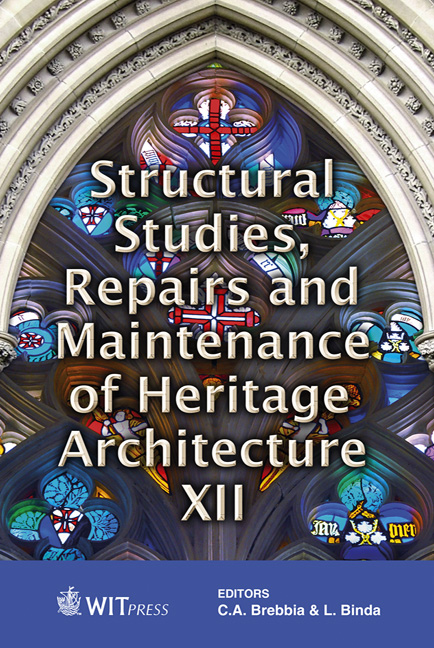Traditional Rammed Earth Construction: Conservation Of Built Heritage In México
Price
Free (open access)
Transaction
Volume
118
Pages
10
Page Range
497 - 506
Published
2011
Size
634 kb
Paper DOI
10.2495/STR110411
Copyright
WIT Press
Author(s)
F. J. Soria, L. F. Guerrero & A. B. García
Abstract
This paper exposes some of the main features that involve rammed earth architecture, with the purpose of contributing to its promotion, conservation, and re-development. The text is centered mainly on the characterization of the traditional way of executing this building technique in México, in order to improve its technological principles and as a way of promoting its application, not only in the restoration of heritage buildings, but also as a possibility for new sustainable architectural projects. Earthen architecture, when compared with other modern building methods and techniques, has outstanding qualities from a sustainable point of view. These characteristics derive, among other aspects, from the low environmental impact involved in the extraction and transformation of the raw material, as well as its great bioclimatic properties adaptable to a wide variety of geographic contexts. Keywords: rammed earth, cultural heritage conservation, built heritage, low impact building materials, sustainable architecture. 1 Introduction Among the existing types of earthen architecture, one that stands out for its extensive use throughout time as well as for its harmonious integration with the natural environment, is the building system known as rammed earth (tapial in Spanish or pisé in French). As it will be explained in detail throughout the article, this system is based on the construction of walls by compacting layers of soil in a wooden box or formwork. The soil used for this system requires small quantities of water in order to be adequately compressed. This last fact represents a great difference with other building techniques that use raw earth, in which the moisture of the soil mixture is a most important factor.
Keywords
rammed earth, cultural heritage conservation, built heritage, low impact building materials, sustainable architecture




